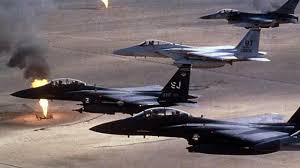|

There is a growing policy level debate in the U.S. over the risk of a serious conflict between Iran and the U.S. and its Arab strategic partners. This has led to reports that the U.S. could deploy up to 14,000 more military personnel to the Gulf, along with a significant increase in it its combat ships and major weapons systems.
The Evolving Matrix of Threats and Risks
It is far from clear that a major conflict will occur, but it is clear that the threat from Iran is growing, that some form of “gray area” military clashes are likely, and there is a risk that such a clash could escalate significantly even if Iran does not want to engage in a major conflict.
These risks are compounded by a wide range of other variables that affect U.S. commitments to the Arab/Persian Gulf region. They include very different and unpredictable levels of tension and conflict – driven by the following major variables and contingencies:
Risk of actual conflict at very different levels of intensity: Major war, limited war, proxy uses of forces, threats with military gestures, low-levels attacks.
Serious reduction in Gulf exports of petroleum, LNG and impact on global economy, critical U.S. imports of Asian manufactured goods.
Continuing Gray Area operations and clashes: Ranging from proxy forces and low-level to sabotage to naval encounters in the Gulf and missile strikes on key infrastructure and military target.
Steady increase in numbers and quality of missile forces: Ballistic, cruise, RPVs, air-launched, Sea-launched; precision-strike/smart warhead, and in different forms of missile defenses.
Equal rises in air forces: Strike/attack, fighter, IS&R, precision strike.
Improvements in surface-to-air missile forces (SAMs) and dual capable BMD and SAM forces.
Expansion of air-sea operations to cover entire Gulf/Gulf of Oman/Indian Ocean/Red Sea – Naval surface, missile, air, smart mine, submarines, submersibles.
Struggle for control of Iraq: Sectarian, Ethnic, Extremist, PMFs, proxies, Iran, U.S.
Struggle for control of Syria: Idlib, Kurdish areas. Uncertain ability to unify rebuild, develop, and stabilize.
Resurgence of extremism/ISIS, AQAP, other.
Use of, or development of, Nuclear, chemical, (BW?) forces.
Precision targeting of critical petroleum, economic, desalination, other infrastructure and military targets; Use of weapons of mass effectiveness.
New forms of cyber warfare, electronic warfare, attacks on critical nodes/sensors.
Competing roles of outside powers: US/Europe, Russia, Turkey, Syria, China: presence/influence/arms sales/advisors/active military role
Uncertain future nature of U.S., British, French presence and power projection.
Evolving role of proxies and non-state actors: Hezbollah, Hamas, PIJ, PMF, “volunteers,” support of extremists and ethnic/sectarian factions.
Arab strategic partner disunity and self-destructiveness: boycott of Qatar, distancing of Oman, Kuwait neutral, UAE tensions with Saudi.
Turkey vs. Kurds. Kurdish tension in Iraq and Iran.
“Failed state” political and economic upheavals – and potential internal conflicts – in Syria, Lebanon, Iraq, Iran, Yemen.
Yemen civil war, struggle for control of Yemen: Iran Houthi, Yemeni government, Saudi Arabia, UAE, AQAP, other internal factions.
Ethnic and sectarian, internal and local tensions and conflict: Syria, Iraq, Bahrain, Saudi; Interactions with Egypt, Jordan, Palestinian internal issues.
Evolving reality of Shi’ite “axis”: Hezbollah, Syria, Iraq, Iran.
Impact of sanctions vs. military action, “wars” of intimidation.
New Report on the Gulf Military Balance
There is no way to predict how these risks will evolve, or what forms future conflicts and power struggles will take. It is possible, however, to assess the current strength of the Iranian and Arab military forces in the region, the current level of U.S. military forces, key trends in regional military spending and arms transfers, key areas of vulnerability and the potential impact of a major war on global petroleum supplies. It also is now possible to assess Iranian military development using excerpts from new reporting by the U.S. Defense Intelligence Agency.
The Burke Chair is issuing a new and greatly expanded assessment of the regional military balance addressing these issues. It is entitled The Gulf Military Balance in 2019: A Graphic Analysis, and is available on the CSIS web site at https://csis-prod.s3.amazonaws.com/s3fs-public/publication/191209_Gulf_Military_Balance.pdf.
|



